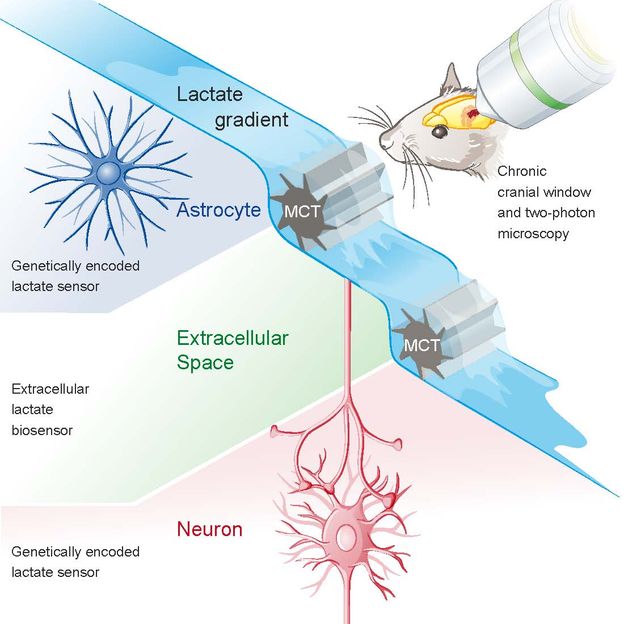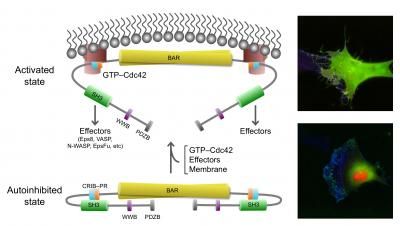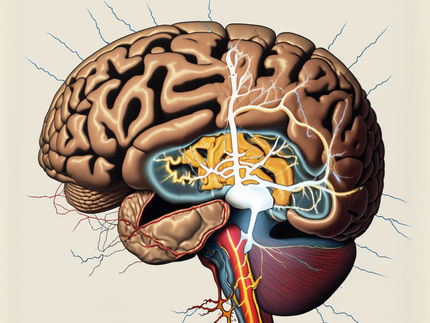Lactate for Brain Energy
nerve cells cover their high energy demand with glucose and lactate. Scientists of the University of Zurich now provide new support for this. They show for the first time in the intact mouse brain evidence for an exchange of lactate between different brain cells. With this study they were able to confirm a 20-year old hypothesis.

UZH
In comparison to other organs, the human brain has the highest energy requirements. The supply of energy for nerve cells and the particular role of lactic acid (lactate) has been a matter of intense research for many years. A hypothesis from the 1990’s postulates, that a well-orchestrated collaboration between two cell types, astrocytes and neurons, is the basis of brain energy metabolism. Astrocytes produce lactate, which flows to neurons to cover their high energy needs. Due to a lack of experimental techniques, it remained unclear whether an exchange of lactate existed between astrocytes and neurons. The group of Professor Bruno Weber from the Institute of Pharmacology and Toxicology now shows that there is a significant concentration gradient of lactate between astrocytes and neurons.
Lactate transport is dependent on concentration
The entry and exit of lactate into and out of cells of the body is concentration dependent and is mediated by a specific lactate transporter (called monocarboxylate transporter or MCT). A typical property of certain transporter proteins is called trans-acceleration. “MCTs can be imagined as revolving doors in a shopping mall, which begin to turn faster when more people enter or exit”, explains Bruno Weber, Professor of Multimodal Experimental Imaging at the University of Zurich. The researchers made use of this property and accelerated the “revolving doors”. By increasing the extracellular pyruvate concentration, they stimulated the outward transport of lactate. Interestingly, lactate levels only changed in astrocytes but not in neurons. Based on this finding and on results from several control experiments a clear lactate gradient between astrocytes and neurons was confirmed. “Due to the fact that lactate transport by MCTs is a passive transport, such a concentration difference is a necessary condition for a lactate flux to be present”, says Bruno Weber.
The scientists utilized a novel fluorescent protein that binds lactate, thereby changing the amount of light released by the fluorescent molecule. This way they could measure the lactate concentration in single cells. “We expressed the lactate sensor in astrocytes or neurons in the brain of anesthetized mice and measured the fluorescence changes with a special two-photon microscope”, explains Bruno Weber.
More than 20 years after the formulation of the hypothesis that neurons metabolize lactate, the researchers have made an important step closer to final proof of this hypothesis. Bruno Weber closes by stating that “Numerous brain diseases have been associated with metabolic deficits. This underlines the importance of an accurate understanding of the processes contributing to brain energy metabolism at the cellular level”.
Original publication
P. Mächler, M.T. Wyss, M. Elsayed, J. Stobart, R. Gutierrez, A. von Faber-Castell, V. Kaelin, A. Zuend M. San Martín, I. Romero-Gómez, F. Baeza-Lehnert, S. Lengacher, B.L. Schneider, P. Aebischer, P.J. Magistretti, L.F Barros, B. Weber; "In vivo evidence for a lactate gradient from astrocytes to neurons"; Cell Metabolism 23, 1–9. November 19, 2015.
Most read news
Original publication
P. Mächler, M.T. Wyss, M. Elsayed, J. Stobart, R. Gutierrez, A. von Faber-Castell, V. Kaelin, A. Zuend M. San Martín, I. Romero-Gómez, F. Baeza-Lehnert, S. Lengacher, B.L. Schneider, P. Aebischer, P.J. Magistretti, L.F Barros, B. Weber; "In vivo evidence for a lactate gradient from astrocytes to neurons"; Cell Metabolism 23, 1–9. November 19, 2015.
Topics
Organizations
Other news from the department science

Get the life science industry in your inbox
By submitting this form you agree that LUMITOS AG will send you the newsletter(s) selected above by email. Your data will not be passed on to third parties. Your data will be stored and processed in accordance with our data protection regulations. LUMITOS may contact you by email for the purpose of advertising or market and opinion surveys. You can revoke your consent at any time without giving reasons to LUMITOS AG, Ernst-Augustin-Str. 2, 12489 Berlin, Germany or by e-mail at revoke@lumitos.com with effect for the future. In addition, each email contains a link to unsubscribe from the corresponding newsletter.
Most read news
More news from our other portals
Last viewed contents



















































